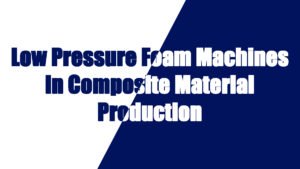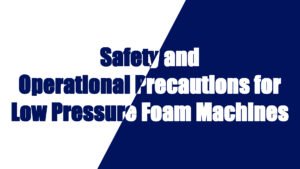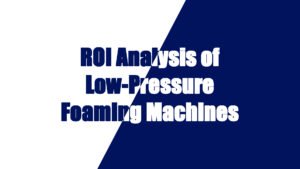What is Mining Industry?
The mining industry is one of the important pillars of the global economy, covering the exploration, mining, processing and sales of various resources, involving metal mines, non-metallic mines, coal and energy minerals. Mining not only provides basic raw materials for energy, construction, manufacturing, etc., but also has an important impact on global trade, employment and environmental protection.
Mining Market Overview
The mining industry involves a wide range of resources, mainly including::
- Metallic minerals:such as gold, silver, copper, aluminum, iron, lithium, cobalt, etc.
- Non-metallic minerals:such as limestone, coal, salt, sulfur, gypsum, etc.
- Energy minerals:such as coal, natural gas, oil, etc.
Mining is not only the foundation of national and regional economic development, but also the source of raw material supply for many industries. With the changes in the global economy, the increase and decrease in resource demand, and the introduction of sustainable development policies, the mining market has shown a trend of diversification and complexity.
Global Mining Market Size and Growth Trend
Global Market Size
According to data from Statista Und Research and Markets, the size of the global mining market is roughly as follows:
- Global mining market size: The total value of the global mining market in 2023 is about US$2.4 trillion, and it is expected that by 2028, the market will grow to US$3.4 trillion, with an average annual growth rate (CAGR) of about 7%.
- Metal Mineral Market:In 2023, the market size of metal minerals is about 2 trillion US dollars, mainly including iron ore, copper, gold, aluminum, lithium, etc.
- Coal Market:The global coal market size is about 500 billion US dollars in 2023, which plays an important role in global energy demand and electricity production.
- Energy Mineral Market: The market size of oil and natural gas mining is about 5 trillion US dollars. As the main energy source, oil and natural gas are still an important part of the global economy.
Growth Trend
- Metallic minerals: With the growth of global industrialization, infrastructure construction, renewable energy and other industries, the demand for metallic minerals (especially copper, lithium, cobalt, nickel, etc.) will continue to grow, especially electric vehicle (EV) batteries and clean energy technologies have driven the demand for these metals.
- Coal market: Due to the transformation of the global energy structure and the promotion of environmental protection policies, the growth of the coal market has tended to slow down, but some emerging markets (such as China and India) still have a large demand.
- Energy minerals: Energy minerals such as oil, natural gas and coal are still the main sources of energy in the world. Although the proportion of renewable energy is gradually increasing, the demand in the energy mineral market will remain relatively stable in the short term.
Regional Distribution and Share of the Mining Market
The geographical distribution of the mining market is affected by resource distribution, policies and regulations, and changes in global demand. The main mining countries and regions are as follows:
Main Mining Countries and Regions
- China:
- China is the world’s largest producer and consumer of mineral resources, especially in coal, iron ore, rare earth metals and bauxite.
- In 2023, China’s mining output value will be about US$600 billion, accounting for 25%-30%of the global mining market.
- As China accelerates its green energy transformation, the demand for strategic metals such as lithium, cobalt and rare earthshas increased significantly.
- Australia:
- Australia is one of the world’s largest producers of iron ore and coal, and a major supplier of lithium, cobalt and uraniumin the world.
- Australia’s mining output value will be about US$250 billionin 2023, accounting for 10% of the global mining market.
- Australia’s mining exports are mainly aimed at Asian markets such as China and India.
- Russia:
- Russia is an important metal mineral producer in the world, especially in bauxite, nickel, platinum group metals and coal.
- In 2023, the Russian mining market will be about $100 billion, mainly affected by energy export policies and fluctuations in international market demand.
- United States:
- The United States is an important metal mineral producer in the world, mainly producing gold, copper, lead, zinc, coal, etc.
- The US mining market is about $200 billion, but due to the decreasing domestic mineral resources, import dependence is gradually increasing.
- South America (Chile, Peru, Brazil, etc.):
- South America, especially Chile and Peru, is the world’s major copperproducer, and Chile’s copper production accounts for about 30% of the world.
- The South American mining market is about $150 billion, among which the demand for metal ores such as copper, gold and lithium is relatively strong.
Regional Market Share
- Asia Pacific: Asia Pacific (China, India, Australia, etc.) accounts for 45%of the global mining market share, and the demand in this region is mainly concentrated in metal and energy mines.
- North America: North America (United States, Canada, etc.) accounts for 20%-25%of the global mining market, mainly concentrated in the fields of metal and energy mines.
- Europe: The European market accounts for 10%, mainly based on resource consumption and recycling, and mineral resources rely heavily on imports.
- South America: The South American market accounts for 10%-15%of the global mining market, mainly relying on the mining of resources such as copper, iron ore, gold and lithium.
- Africa: Africa is rich in mineral resources, accounting for about 5%-10%of the global market share, especially in gold, diamonds, bauxite and other aspects.
Drivers and Challenges of the Mining Market
Market Drivers
Global Economic Growth and Infrastructure Construction: With the acceleration of global economic development and infrastructure construction, especially the urbanization and industrialization of emerging market countries (such as China and India), the demand for mineral resources has increased significantly.
The Rise of Renewable Energy: The development of clean energy technology has driven the demand for metals such as lithium, cobalt, and nickel, especially in green energy equipment such as batteries, solar panels, and wind turbines.
The Growth of Electric Vehicles: The rapid development of the electric vehicle market has increased the demand for battery materials (such as lithium, cobalt, and nickel), which has had a profound impact on the global mining market, especially metal mines.
Technological Innovation and Automation: Technological advances in the mining field, especially in automation, digitalization, and intelligent mining technologies, have promoted the improvement of production efficiency and provided more opportunities for the mining of mineral resources.
Policies and Environmental Regulations: Governments have strengthened their supervision of the mining industry, and environmental regulations and sustainable management of mineral resources have gradually become key factors in the development of the mining industry.
Market Challenges
Resource Depletion and Rising Mining Costs: With the gradual depletion of exploitable mineral resources, the cost of exploring and mining new resources has increased year by year, which has brought greater operating pressure to mining companies.
Environmental regulations and policy pressure: With the increasing global attention to environmental protection, mining companies need to face stricter environmental regulations, including emission standards, waste management and land restoration.
Geopolitical and supply chain risks: The distribution of mining resources is extremely uneven. Some countries and regions (such as South America and Africa) are rich in resources, but political instability, war, labor-capital conflicts and other factors may lead to supply chain disruptions.
Impact of global climate change: Natural disasters caused by global climate change (such as floods, droughts, etc.) affect the production and transportation of mineral resources, increasing the uncertainty of mining companies.
Polyurethane in Mining Industry
Polyurethan has become a valuable material in the mining industry due to its versatility, durability, and performance in challenging conditions. The material’s unique properties, such as high abrasion resistance, flexibility, resilience, and resistance to chemicals and environmental factors, make it ideal for various applications in mining operations. Polyurethane’s benefits are particularly evident in areas such as mineral extraction, material handling, equipment protection, and environmental management.
Key Properties of Polyurethane for Mining Applications
Polyurethane is selected for mining applications based on several key characteristics:
Abrasion Resistance: Polyurethane is extremely resistant to abrasion and wear, which is crucial in mining where equipment and materials undergo constant friction and mechanical stress.
Flexibility: Polyurethane can be formulated with varying degrees of flexibility, allowing it to handle complex shapes and absorb shock without cracking or breaking.
Durability and Longevity: Polyurethane’s ability to withstand harsh conditions, including extreme temperatures, UV exposure, and exposure to chemicals, makes it an ideal material for long-lasting mining equipment.
Chemical Resistance: Polyurethane is resistant to many of the harsh chemicals found in the mining environment, including acids, alkalis, oils, and solvents, which helps protect equipment and personnel.
High Load-Bearing Capacity: Polyurethane has excellent tensile strength and load-bearing properties, making it suitable for heavy-duty applications.
Impact Resistance: The material’s impact resistance makes it ideal for mining environments where high-impact conditions are common.
Cost-Effectiveness: While polyurethane may have a higher initial cost than other materials, its long lifespan, minimal maintenance needs, and overall durability make it more cost-effective over time.
Applications of Polyurethane in the Mining Industry
Polyurethane is utilized in a wide variety of mining-related applications. Below are some of the most common and important uses:
Mining Equipment Components
Polyurethane Linings and Coatings: Polyurethane is commonly used as a lining material for mining equipment, such as chutes, hoppers, conveyors, Und bins. It protects equipment from abrasive materials (e.g., rocks, coal, ores) and extends the lifespan of these components by reducing wear and tear.
- Benefits: Reduced friction, increased durability, and minimized maintenance costs.
Screens and Sifters: Polyurethane is often used in the production of vibrating screens, sieving mesh, Und screen panels. These components are subjected to significant wear from abrasive particles and chemicals. Polyurethane’s toughness helps maintain screen integrity, ensuring efficient sorting and processing of minerals.
- Benefits: Long-lasting wear protection and efficient filtration.
Bushings, Bearings, and Seals: Polyurethane’s excellent abrasion resistance Und flexibility make it ideal for use in bearings, bushings, Und seals in mining machinery, such as crushers, mills, and conveyors.
- Benefits: Smooth operation of heavy machinery, reduction in wear, and less downtime.
Material Handling and Transport
Conveyor Belts and Rollers: Polyurethane is frequently used in the manufacture of conveyor belt linings Und rollers in mining operations. Polyurethane’s ability to withstand heavy loads, abrasive materials, and extreme conditions makes it an excellent material for these components.
- Benefits: Higher load-bearing capacity, increased belt lifespan, and smoother operation under high-impact conditions.
Flow Control and Dust Suppression: Polyurethane is used to create dust suppression systems Und flow control systems in mining operations. These systems help manage the flow of materials while reducing airborne dust particles, which can be harmful to workers and the environment.
- Benefits: Improved environmental management, reduced dust-related health risks, and enhanced material flow.
Mining Wear Parts
Polyurethane Wear Pads and Liners: Mining equipment, such as excavators, loaders, shovels, Und haul trucks, often experiences high levels of wear from constant contact with harsh materials. Polyurethane wear pads and liners are designed to protect critical components from damage due to impact, abrasion, and friction.
- Benefits: Prolonged lifespan of mining equipment, reduced downtime, and lower maintenance costs.
Bucket Liners: Polyurethane is used to manufacture bucket liners for heavy mining equipment like front-end loaders Und excavators. These liners protect the buckets from abrasive and corrosive materials.
- Benefits: Increased bucket life, reduced maintenance, and improved productivity.
Safety and Protection
Polyurethane Rubber Matting: Polyurethane is used in the production of anti-slip mats Und safety flooring in mining sites. These mats are crucial for ensuring worker safety in environments that are often wet, slippery, or subject to heavy machinery traffic.
- Benefits: Improved traction, worker safety, and durability under harsh conditions.
Polyurethane Protective Coatings: Polyurethane is used as a protective coating for mining equipment and infrastructure to shield against corrosion, wear, and environmental degradation. This is particularly important in outdoor environments where mining machinery is exposed to extreme weather and chemicals.
- Benefits: Enhanced corrosion resistance, reduced maintenance costs, and extended equipment life.
Environmental Management
Water and Wastewater Treatment: Polyurethane is used in water filtration systems, separation systems, Und wastewater treatment applications in the mining industry. Polyurethane filters and membranes are effective at separating contaminants from water and ensuring that effluent meets environmental standards.
- Benefits: High filtration efficiency, improved environmental compliance, and sustainable water management.
Polyurethane Foam for Land Reclamation: Polyurethane foam can be used in land reclamation Und mine site rehabilitation. It is utilized for filling voids, stabilizing soil, and providing an effective base for vegetation. Polyurethane foam is lightweight, durable, and can be injected into hard-to-reach areas.
- Benefits: Cost-effective site reclamation, enhanced soil stabilization, and better land reuse opportunities.
Benefits of Polyurethane in Mining
High Durability and Longevity: Polyurethane’s resistance to abrasion, wear, and chemical attack ensures that mining equipment lasts longer and requires less frequent replacement, reducing overall operational costs.
Enhanced Performance: Polyurethane components improve the efficiency of mining operations, as they reduce friction, prevent material buildup, and allow for smoother transport and processing of mined materials.
Cost Efficiency: While the upfront cost of polyurethane parts can be higher than other materials, their longevity and minimal maintenance needs lead to significant cost savings over the lifetime of the equipment.
Versatility: Polyurethane can be manufactured in various forms, from foams to solid elastomers, to meet the specific needs of different mining applications. It can be tailored for hardness, elasticity, and impact resistance, providing solutions for a wide range of equipment and conditions.
Environmental Protection: Polyurethane’s ability to resist wear and corrosion reduces the need for frequent repairs or replacements, minimizing the generation of waste. Additionally, polyurethane-based products can help in environmental management, such as dust suppression and wastewater treatment.
Challenges and Considerations
Anschaffungskosten: Polyurethane components can be more expensive than traditional materials like steel or rubber, though the long-term benefits often outweigh the initial investment.
Degradation under Extreme Conditions: In some cases, polyurethane can degrade under extreme UV exposure, high temperatures, or certain chemicals. To mitigate this, specially formulated polyurethanes with enhanced resistance are used in these conditions.
Umweltauswirkungen: Like many synthetic materials, polyurethane has an environmental impact in its production and disposal. However, ongoing research is focused on developing more sustainable formulations, including bio-based polyurethanes.
Conclusion
Polyurethane’s unique combination of abrasion resistance, chemical resistance, flexibility, Und impact resistance makes it a critical material for the mining industry. Its applications in equipment components, material handling, wear parts, safety, and environmental management enhance the efficiency, safety, and sustainability of mining operations. While there are challenges regarding cost and environmental impact, the long-term benefits of using polyurethane, including increased equipment lifespan Und reduced downtime, make it an increasingly important material in modern mining operations.
As mining operations continue to evolve and require more advanced materials, polyurethane’s role in the mining industry is likely to expand, particularly in areas such as environmental management, safety, Und innovative equipment protection.
Next Blog: Why Choose Polyurethane in Mining Industry?



































